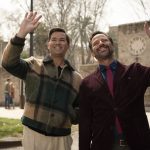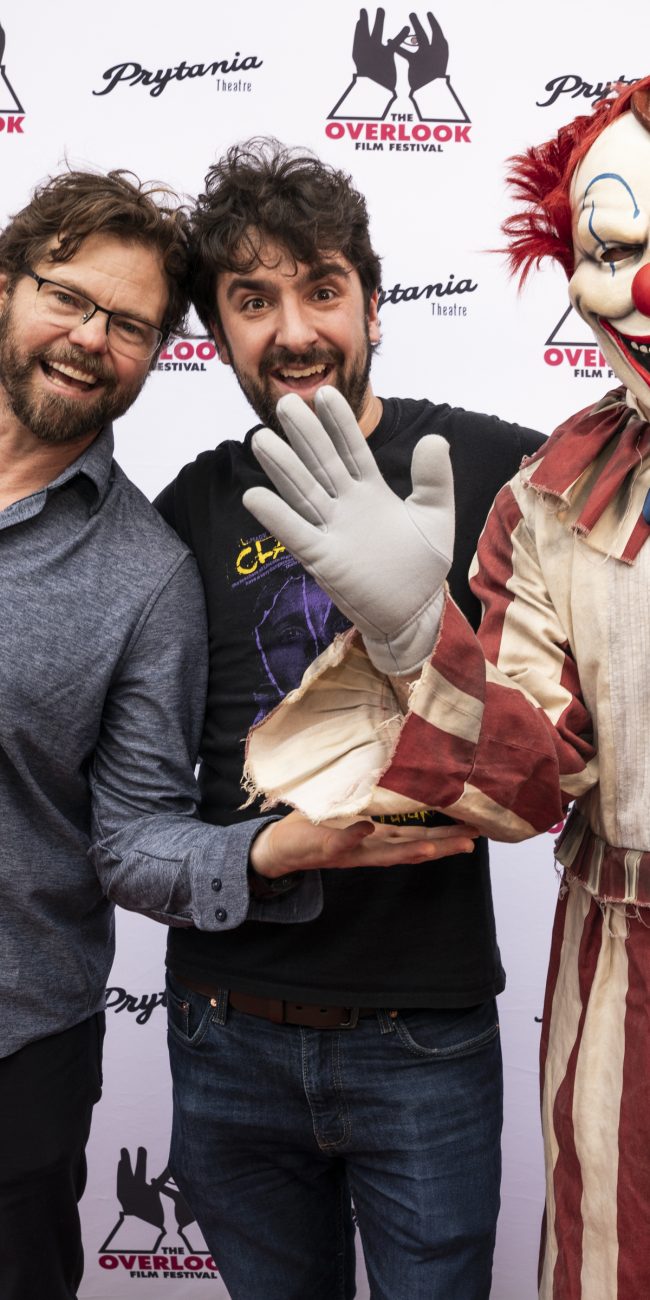A Conversation with Raúl O. Paz-Pastrana (BACKSIDE)
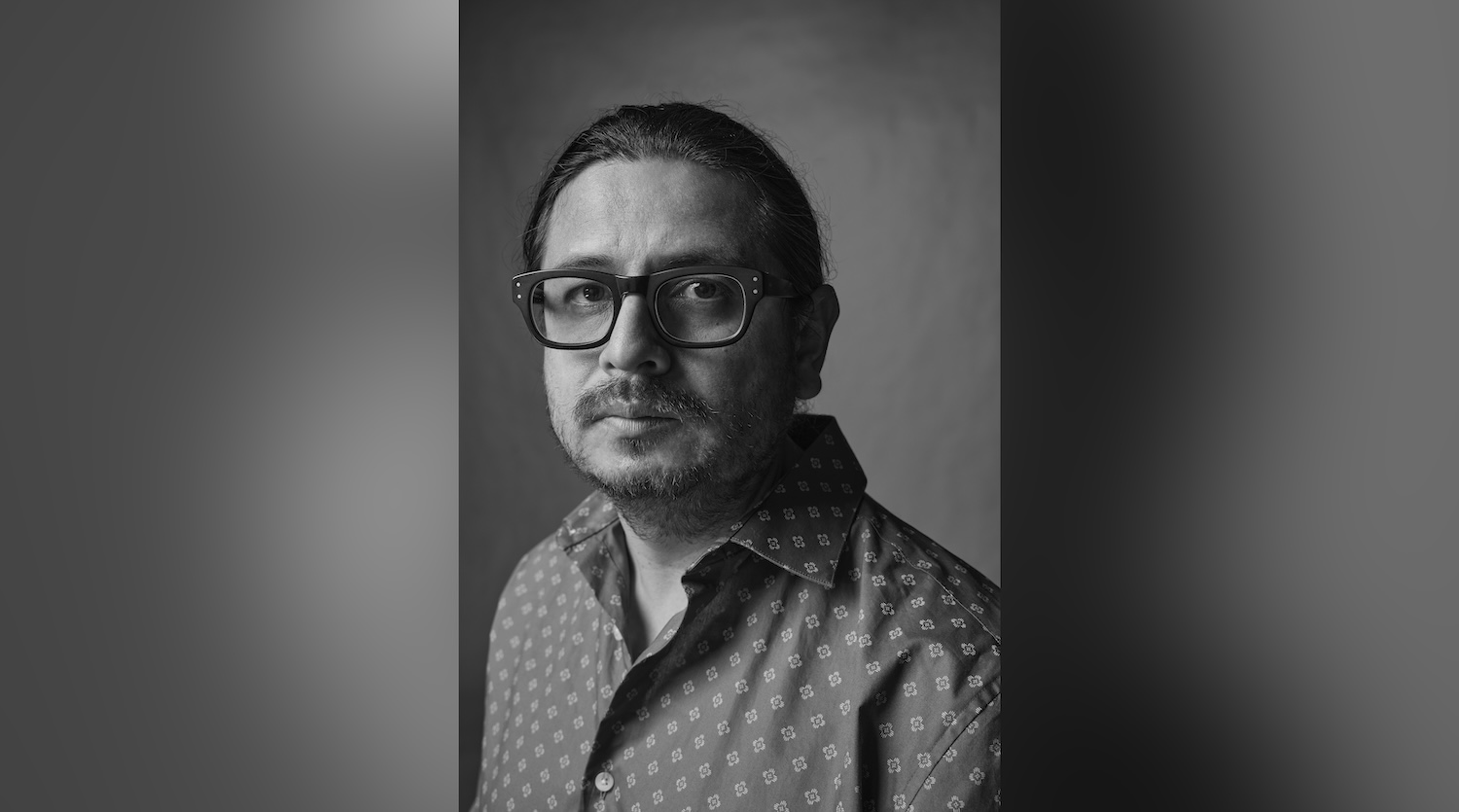
Director Raúl O. Paz-Pastrana just premiered his latest documentary, Backside, at the 2025 Tribeca Festival (where I reviewed it). The film focuses on the grooms and hotwalkers of Churchill Downs (home of the Kentucky Derby), most of whom are Latine. Through a gently observational lens, Paz-Pastrana examines the quotidian challenges of caring for racehorses when they’re not on the track. Just after the fest, I had a chance to speak with Paz-Pastrana via Zoom and what follows is a transcript of that conversation, edited for length and clarity.
Hammer to Nail: I really like the poster design for your film. Who came up with that?
Raúl O. Paz-Pastrana: We had a really great poster designer, from Argentina, Martín Lehmann. I was actually talking to him five minutes ago. We’re finishing the trailer and he is doing the graphics for the trailer. We actually quote you in one of them.
HtN: Oh, excellent. Did you give him any ideas? Was it totally his own invention? I mean, it obviously speaks to the theme of the movie, but tell me about that.
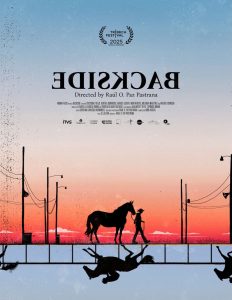
The BACKSIDE poster
ROP-P: Yeah, he was like, “What do you want?” And I went, “Watch the movie and do something that inspires you from the movie.” And he watched that and came out with three designs, two based on photos and then that one at the very end. And I was like, “That one looks really good.” (laughs) He came up with the backwards design and everything. He watched the movie and he was inspired by the movie to make that. So it was a very easy process because he just watched it and I felt, just from seeing the poster, that he got the film. The only thing I changed is that he had Cristo [groom Cristobal Trejo] with the horse and I’m like, “I want Bertila [Bertila Quinteros, another groom] with a pink hat.” It didn’t work, but it’s her silhouette from the film, so that’s the only thing. But other than that, he came up with everything after watching the film.
HtN: Nice. Please tell me about Around the Day in Eighty Worlds, by Julio Cortazar. In the press notes, you mention that book as a big influence.
ROP-P: Yeah, yeah. Julio Cortazar is one of my favorite writers and poets and that book is a two-part book. And in it, Cortazar looks at objects around his life, from reading newspapers to watching a film, reading articles, drinking coffee, and watching ants walk on the street. He gets mundane things and explores them in ways that are so much in depth and fun and incredible and sometimes heartbreaking. I love the title. I feel like I connect with that in terms of how I make films, things that my characters do or things that happen and I explore those in depth. Even my last film, Border South, looking at migrants, instead of focusing on the violence—although there is violence in that film—I focus on them telling jokes or sharing coffee. I like the repetition of the work, like how they do it over and over, the little things that they say.
HtN: Are you a horse racing fan?
ROP-P: No, I’m not a horse person. I mean, I was born on a ranch around horses and then we moved to the city in Mexico, but I’m not a horse person at all. My wife’s from Kentucky, so we’ll go to visit her parents, who live in Lexington, and then we go to horse country, from Lexington to Louisville. There are drives that you take and there are beautiful farms with beautiful horses. And Emily, my wife, planted the seed early on in like 2012 or 2014. She casually said, “Look around! Who’s around the horses?” It was Latinos, mostly Mexicans and Guatemalans. And after that, I saw the workers around the horses every time we did this drive. I was mostly interested in the ecosystem around the horse, which was the workers. So that’s how the interest originally started.
I got obsessed and then in 2019 at the Society for Visual Anthropology Film Festival in Vancouver, they had workshops and there was an ethnographer who was working on Churchill Downs and I saw her presentation. I got to know more from there. And there are very few ethnographers that actually work with the workers. Almost all ethnographers work with the human-animal relationship. But her study was specific to the migrant workers. So I learned a lot from her. Later on I found out that her husband, Beto [Adalberto “Beto” Espinosa Bravo], had been a groom for 22 years.
So then he became our expert and field producer on the film. And with him I went for a whole year just to talk to grooms and trainers and ask them, “Would you be interested in a film about your work, exploring your work, your day to day?” They all said yes. I don’t think they knew what it meant, really. Usually, when people go film, they film the horses or the trainer or the sport itself, and they themselves are just like little snippets, never in depth. So that’s how it progressed from that seed that my wife planted to me getting obsessed and trying to find out more and more and more, which is usually what happens to me.
HtN: I’m going to guess you had to negotiate access to behind the scenes at Churchill Downs. What was that like?
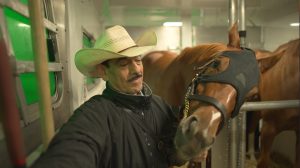
A still from BACKSIDE
ROP-P: This film was hard, because Churchill Downs is a casino and they’re very closed down. Many people have tried to film in there, including HBO and other places, and they usually say no. But years ago, I worked as a union organizer, and for this we did an escalation plan, or what is called a power analysis. We mapped out who was who. And in Kentucky—the South in general—you not only map the place that you want to film, in this case Churchill Downs, you also need to map the community and who’s who in the community: who are the people that like horses, that like movies, etc. So we had more than one campaign; one with the community, the grooms, the people we want to film, make them understand the film, what we’re doing. And then the other two were the community around who would be supportive of the film, and then Churchill itself. Because if we made the wrong move, I think the answer would’ve been no. So we found a person from Kentucky who knew horses who had allowed a book to be made before, and she became our connection. And from then on, it was in between going to film with the trainers and the grooms, for which we had permission early on. And then we got permission from Churchill Downs to film all the other stuff around.
HtN: For how long did you film? I know that you were definitely there at some point in 2022 because I heard the audio of Rich Strike’s amazing win, but I’m assuming you filmed for longer than 2022.
ROP-P: Yeah, I don’t know. I thought that one was in 2023, but that’s just because we filmed three Derbies, so I don’t know which one is which. So, I started in 2020 and I was ready to go to film when COVID happened. So that stopped us, but I kept talking to people and that’s when I built up the team of Patricia and Gabriela [producers Patricia Alvarez Astacio and Gabriella García-Pardo]. Otherwise, I was going to go and start in 2020. But the buildup and research got more in depth. And then from 2021 to 2024, we filmed. I didn’t go to film in 2025, and 2024 was less. The bulk of the film is 2021, 2022 and 2023.
HtN: Did any of the horses that we see “backstage,” so to speak, run in the Derby?
ROP-P: That question came up at the Q&A and Cristo answered it very well because the way it works is that you have the barns of Churchill Downs and then those at Santa Ana [in California], which is probably the other bigger barn that competes with Churchill Downs for prestige. And then you have New York and Baltimore. But those two, Santa Ana and Churchill Downs, are the most prestigious because they have races year-round where people can make money. And so the way it works, if I remember how Cristobal said it, is that people compete from all over the world, compete in different races, and from those races they qualify to the Derby, including races in Japan and Dubai. Israel used to have one, but not anymore, but France still does. And England? Maybe I’m making up England, but France, Japan, Dubai, and all over the United States. Dubai has one of the biggest races now in the world. Those are qualifiers for the Derby. So the horses that you see, maybe some of the ones that we filmed made it or not, I don’t know a hundred percent. But the ones that are in Churchill, not all of them compete in the Derby because they’re mostly there for all the races that happen throughout the year.
HtN: Got it.
ROP-P: But they compete in many races that are prestigious all around.
HtN: So, in the film, the horses seem to have—even though they’re loved by the people who take care of them—a somewhat limited life. They’re in their barn, then they go out to race. Do any of these horses actually have a better life than what we’re seeing, in terms of being able to go out at some point and enjoy a field and just run free? Is that what happens when the racing season is over? Will it happen later in their life? Do you know?
ROP-P: Yeah, my knowledge is not the best on that. While they are racing from year one to year five or seven, that’s their life, what you wrote about the film. And that’s why I think Cristo mentioned it at the end of the film that he feels bad for them because they’re taken away from their mom at an early age. As for the life afterwards, it depends on the owner and how much money the owner has and how much the owner likes the horse. Most of the owners don’t go to the stables. They rarely see them because it’s a sport and it’s a business for them. So they have their trainers, the trainers are there, the trainers get their help, which are their grooms and the hotwalkers and jockeys, and the owners rarely are there. But that decision is usually up to the owner. There are a few farms that take horses.
The racehorse is a particularly neurotic animal from the life that they lead. So they have a hard time adapting once they get out, the ones that get out to farms, if the owner has money. It just depends. And then some get sold again to different types of races. The Amish buy horses for work. It’s interesting; I don’t know why they like racehorses, but you see them buying horses. So it’s a mixed bag. But I don’t think most of them have a happy life afterwards. I don’t know it very well, but that’s what I’ve heard.
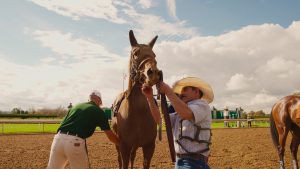
A still from BACKSIDE
HtN: From the little I know, that sounds about right. Final question: to your knowledge, has this world that we see in the movie been at all affected yet by some of these hardline immigration policies of Trump and ICE?
ROP-P: So, there are several layers to the answer. The first layer is what you’re talking about. The raids are happening in Kentucky and everywhere in the United States. And there are several anthropologists that work specifically on this. And once the raid happens in a community, that community doesn’t want to take their kids to school, they don’t want to do the things that make the community work or buy things at the grocery. And there are specific studies about how, when raids happen, the whole community gets affected. For the screening, we could only bring Cristobal and his family because he’s a dual citizen, but all other characters couldn’t make it. Even those that have permits didn’t want to risk it because they have that fear, that layer of fear. There were raids of Churchill Downs back in the Obama years, but right now, as far as I know, there haven’t yet been raids there.
And I think this is one of the reasons why all the trainers—maybe one said no—that we talked to said yes to the film because they need those workers and they want them to have some sort of documentation. Some of them do, some of them don’t. Some of them have these visas that are up in the air right now. So many of the trainers have been outspoken about wanting some sort of immigration reform. Churchill Downs is very careful with their statements, but all of them know that they depend on them. So I don’t want to stir the hornet’s nest, but it’s affecting them. They’re always looking for what’s going to happen if ICE does a raid. It’s a private property; it is not like it used to be when Obama did the raids, when it was open. Now it’s closed. So it’s not as easy as before to do a raid on Churchill Downs. But it can happen. I mean it just can happen. You never know. It is the not knowing that also affects people.
HtN: Well, it’s great that there now is this document showing the work that they do and how valuable it is. So thank you so much for making the film.
ROP-P: Thanks so much, Chris. I appreciate it.
– Christopher Llewellyn Reed (@ChrisReedFilm)



